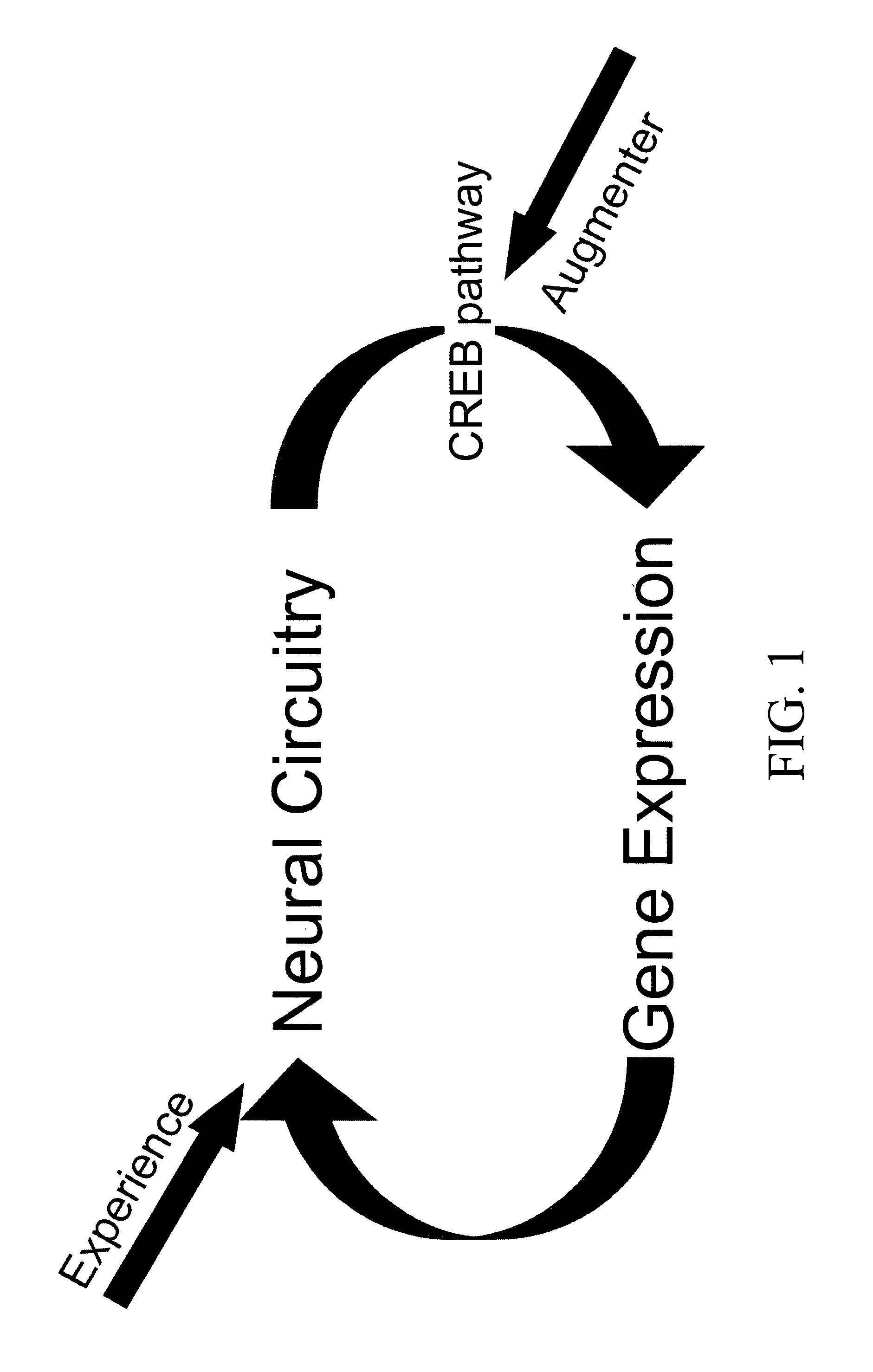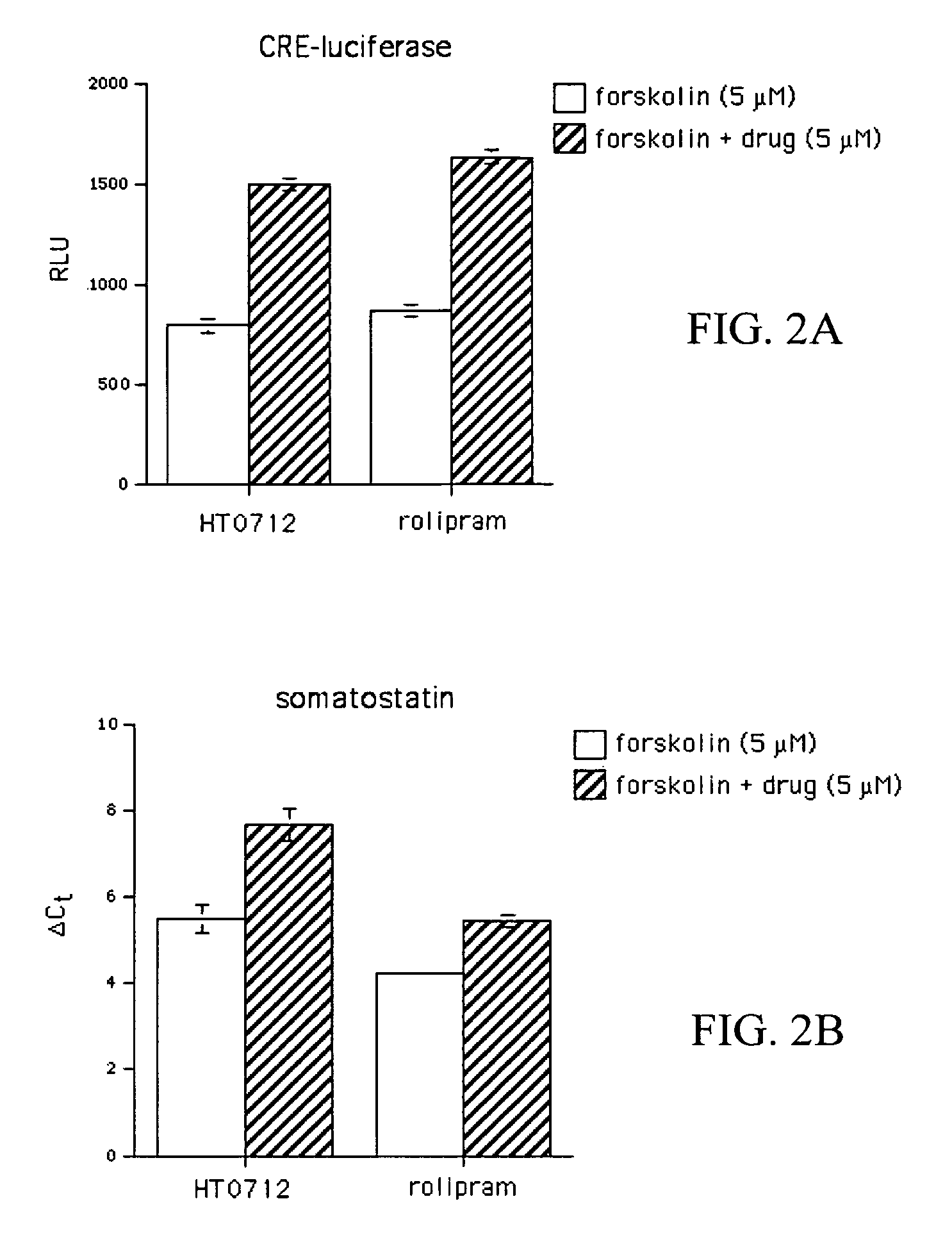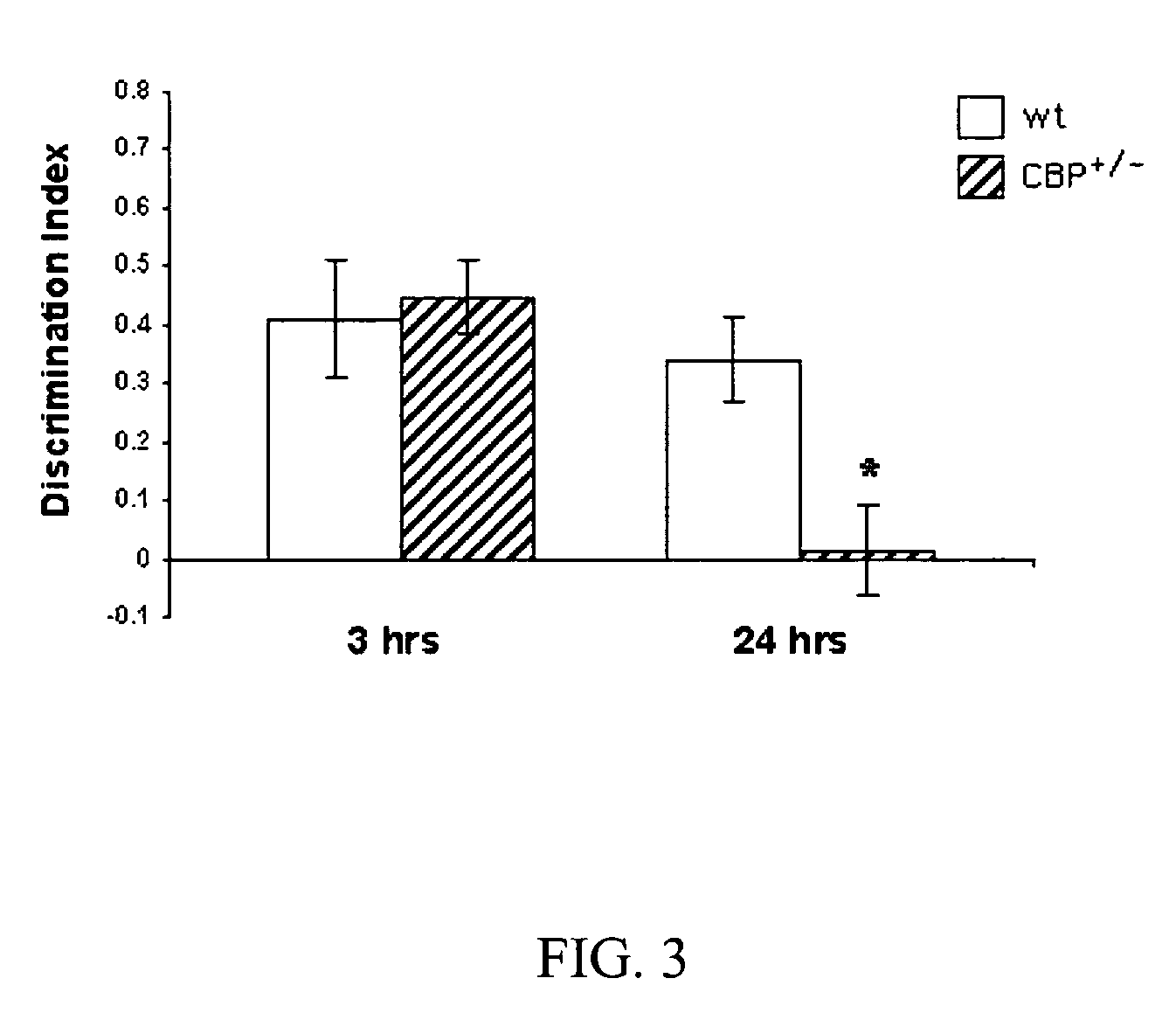Phosphodiesesterase 4 inhibitors for the treatment of a cognitive deficit
a technology of phosphodiesesterase and inhibitors, applied in the field of phosphodiesesterase 4 inhibitors for the treatment of cognitive deficits, can solve the problems of affecting the autonomy and affecting the quality of life of individuals, and cognitive training protocols are often very costly and time-consuming, so as to improve the ability or function of normal cognitive performance, enhance the effect of normal cognitive performance in an animal and improve the ability to perform normal cognitive functions
- Summary
- Abstract
- Description
- Claims
- Application Information
AI Technical Summary
Benefits of technology
Problems solved by technology
Method used
Image
Examples
example
[0089]This study was undertaken to demonstrate that a cognitive deficit associated with mental retardation can be treated with a phosphodiesterase 4 (PDE4) inhibitor in conjunction with a cognitive training protocol. The study was conducted using an animal model of Rubinstein-Taybi syndrome (RTS).
[0090]RTS is a human genetic disorder characterized by mental retardation and physical abnormalities including broad thumbs, big and broad toes, short stature and craniofacial anomalies (Rubinstein, J. H. & Taybi, H., Am. J. Dis. Child., 105:588-608 (1963); Hennekam, R. C. et al., Am. J. Ment. Retard., 96:645-660 (1992); Levitas, A. S. & Reid, C. S., J. Intellect. Disabil. Res., 42(Pt 4):284-292 (1998); and Cantani, A. & Gagliesi, D., Eur. Rev. Med. Pharmacol. Sci., 2:81-87 (1998)). RTS occurs in about 1 in 125,000 births and accounts for as many as 1 in 300 cases of institutionalized mentally retarded people. In many patients, RTS has been mapped to chromosome 16p 13.3 (Imaizumi, K. & Kuro...
PUM
| Property | Measurement | Unit |
|---|---|---|
| time | aaaaa | aaaaa |
| time | aaaaa | aaaaa |
| period of time | aaaaa | aaaaa |
Abstract
Description
Claims
Application Information
 Login to View More
Login to View More - R&D
- Intellectual Property
- Life Sciences
- Materials
- Tech Scout
- Unparalleled Data Quality
- Higher Quality Content
- 60% Fewer Hallucinations
Browse by: Latest US Patents, China's latest patents, Technical Efficacy Thesaurus, Application Domain, Technology Topic, Popular Technical Reports.
© 2025 PatSnap. All rights reserved.Legal|Privacy policy|Modern Slavery Act Transparency Statement|Sitemap|About US| Contact US: help@patsnap.com



